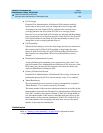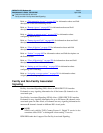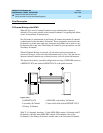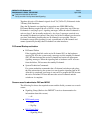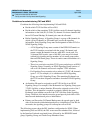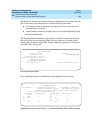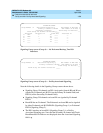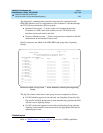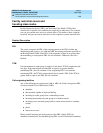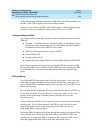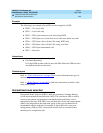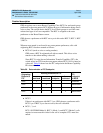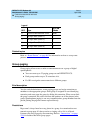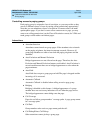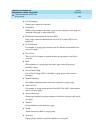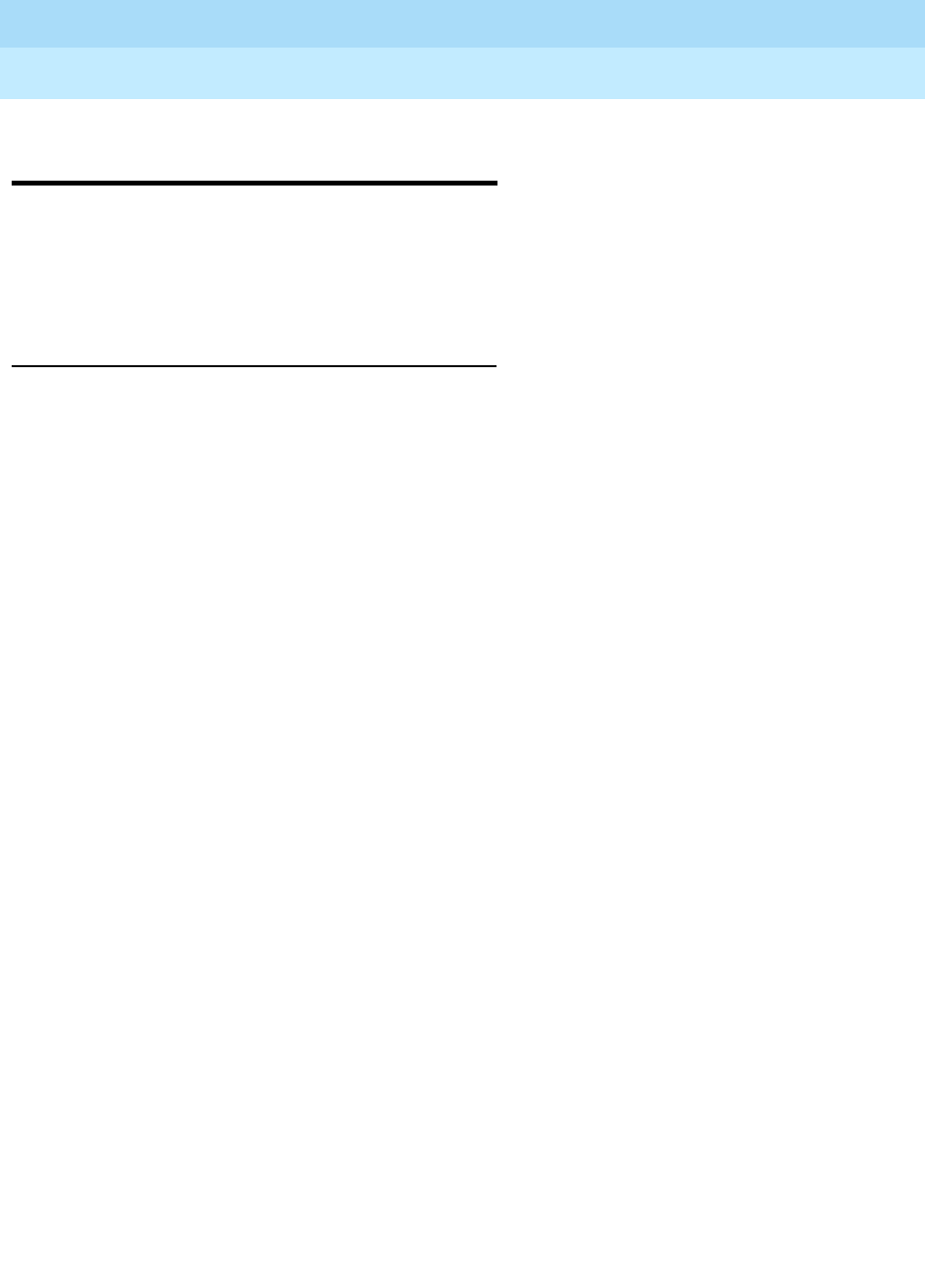
DEFINITY ECS Release 8.2
Administrator’s Guide
555-233-506
Issue 1
April 2000
Features and technical reference
1338Facility restriction levels and traveling class marks
20
Facility restriction levels and
traveling class marks
Facility Restriction Levels (FRL) and Travelling Class Marks (TCM) allow
certain calls to specific users, and deny the same calls to other users. For example,
you can give certain users access to central office (CO) trunks to other corporate
locations, and you can restrict other users to less expensive, private-network lines.
Detailed Description
FRL
The switch compares the FRL of the outgoing phone to the FRL of either the
terminating trunk group or, for AAR and ARS, the routing preference specified on
the Routing Pattern Table. If the FRL of the originator is equal to or greater than
the terminating or route pattern FRL, the call continues. Otherwise, the call is
blocked.
TCM
If an intertandem tie-trunk group is used for a call, then a TCM is outpulsed as the
last digit. If the intertandem tie-trunk FRL is equal to or greater than the
terminating FRL, the call continues. If the originating FRL is less than the
terminating FRL, the TCM is compared with the tie-trunk’s FRL. If the TCM is
greater than or equal to the FRL, the call continues.
Call-originating facilities
Any of the following can originate an AAR or ARS call. Each is assigned an FRL
via an associated Class of Restriction (COR).
■ attendant
■ data terminal capable of keyboard dialing
■ incoming tie-trunk group from a subtending location
■ incoming intertandem tie-trunk group (at a tandem switch)
■ incoming access tie-trunk group (links a remote main switch to a tandem
switch)
■ phone
■ remote access user
Phones and all incoming tie-trunk groups use the FRL of their COR. On
attendant-extended calls, the attendant-group FRL is used. If Individual Attendant



